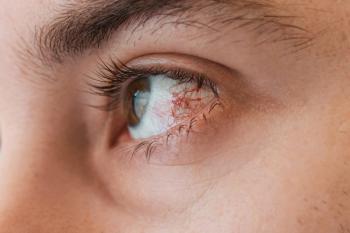
Epithelial cell sloughing consistent with solution-induced corneal staining
Changes in the sloughing of corneal epithelial cells over time may help explain the transient nature of solution-induced corneal staining in contact lens wearers, according to one expert.
Key Points
"The relevance of SICS is a subject of debate, in part, because of its transient nature," said Dr. Peterson, research assistant professor in the Centre for Contact Lens Research, University of Waterloo, Ontario, Canada.
"We hope our observations on what is happening to the corneal epithelial cells will contribute information toward understanding the SICS reaction," she added. "However, we recognize the need for interpreting our findings carefully, as SICS may be influenced by a number of factors, and for further research to determine why and how this reaction occurs."
Dr. Peterson and her colleagues investigated the shedding of human corneal epithelial cells during the SICS reaction in a controlled, double-masked study.
Five contact lens wearers cleaned and disinfected balafilcon-A lenses with a polyhexamethylene biguanide (PHMB)-based multipurpose solution to induce SICS in one eye. As a control, patients cleaned and disinfected identical lenses with a hydrogen peroxide-based solution to use in the fellow eye. Researchers randomized lens assignment between the two eyes, and the patients wore lenses for 2, 4, or 6 hours on 3 separate days.
At each visit, researchers obtained baseline measurements of corneal staining prior to lens insertion and re-graded corneal staining after lens removal. Corneal staining in the control eyes was not significantly different than baseline measures after any lens wear interval. However, consistent with previous reports, corneal staining in the SICS eyes was significantly increased 2 hours after baseline in the same eyes and when compared to the contralateral eyes. Staining was significantly reduced after 2 to 4 hours of lens wear and slightly more after 6 hours.
Newsletter
Want more insights like this? Subscribe to Optometry Times and get clinical pearls and practice tips delivered straight to your inbox.



















































.png)


